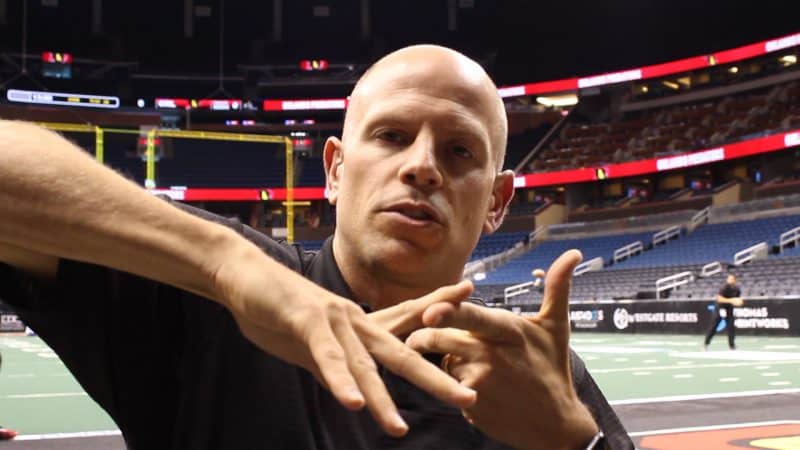What is Turf Toe?
- What Are Common Causes of Turf Toe?
- What Are the Symptoms of Turf Toe?
- How is Turf Toe Treated?
- What is the Recovery Process After Turf Toe Treatment?
Turf toe occurs when one sprains or tears the ligaments around the big toe joint. It’s most often associated with football players who play on artificial turf, but it impacts athletes in other sporting realms including track and field, basketball, gymnastics and dance. Turf toe results from jamming the big toe or having to push off of it repeatedly, like in sprinting.
“A turf toe is an interesting injury that occurs when the foot is in the position with the heel up and the toes get stretched, most notably the big toe,” says Bryan L. Reuss, M.D., a double board-certified orthopaedic surgeon specializing in sports medicine at Orlando Orthopaedic Center.
What Are Common Causes of Turf Toe?
Turf toe can result from any sporting activity where the balls of the feet are flexed, the heel is raised off the ground, and significant force is used to push off of the big toe. When propelling oneself forward, if the big toe stays flat on the ground and fails to rise to accompany the lift off, the big toe may be pushed into a hyperextended position, causing the ligaments around the big toe to become damaged, stretched or torn.
This hyperextension of the big toe is usually seen on artificial grass, which tends to be a harder surface providing less shock absorbing qualities.
What Are the Symptoms of Turf Toe?
The most common signs of turf toe include pain, inflammation, and reduced mobility at the base of the big toe. Symptoms can manifest in two ways: in the case of repetitive strain, symptoms evolve slowly and worsen over time. However, if as a result of a jolting, sudden motion, like an over-the-back tackle from behind in football, where the ball joints of the foot are forced into extreme hyperextension, an instant injury can occur causing severe pain that usually deteriorates within twenty-four hours.
Sometimes a popping sound may be experienced at the time of injury if the bone beneath the cartilage has been affected.
How is Turf Toe Treated?

Dr. Reuss demonstrating how turf toe can occur.
Once a sports medicine specialist has confirmed a turf toe diagnosis, the patient’s injury will be graded on a scale of one to three:
- Grade 1: Stretching of the plantar complex resulting in localized tenderness and some swelling.
- Grade 2: A partial tear of the plantar complex generating widespread pain, medium swelling, and bruising. It becomes painful to move the toe and range of motion is restricted.
- Grade 3: A complete tearing of the plantar complex producing extreme discomfort, increased inflammation and bruising. Movement of the big toe is very painful and problematic.
Based on which grade of turf toe one is diagnosed with, the physician will determine the best treatment option. Turf toe can typically be treated without surgery.
For Grade 1 injuries, rest, ice, compression and elevation (RICE) are usually recommended and anti-inflammatory medicines prescribed to alleviate discomfort and swelling. Special orthotics may be employed that supply additional stability and can enable an athlete to continue training while lessening the stress placed on the plantar joint of the big toe. The toe may also be taped to the toe next to it to stabilize it and alleviate any further stress.
With Grade 2 injuries it’s crucial to keep the big toe joint immobilized. Walking boots can be prescribed for periods of seven to ten days, as needed. Once removed, the wound is treated the same way as a Grade 1 injury, incorporating when necessary, a stretching and strengthening regime. Athletes with Grade 2 injuries typically take up to two weeks before being fit to return to their sport.
Athletes with Grade 3 turf toe injuries may need to be immobilized for several weeks. A walking boot or cast may be used to keep the big toe pointing partly down. With improvement, the injury will be treated with Grade 2 and then Grade 1 protocols.
In serious cases, where symptoms continue, or an athlete’s performance is significantly affected, surgery may be an option. Surgical intervention for severe Grade 3 cases are typically recommended with:
- Serious tearing of the plantar plate
- Sesamoid fracture (tiny bones located on the underside of the foot)
- Irregular vertical movement in the big toe joint
- Loose bony shard in the joint
- Damage to the big toe cartilage
- Bunions
The type of surgical procedure used will depend on the nature of the injury. The goal of surgery is to repair the tendons, ligaments, and tissues as well as to restore normal functioning of the big toe joint.
What is the Recovery Process After Turf Toe Treatment?
“It takes anywhere from four to six weeks to recover from turf toe,” says Dr. Reuss. “Often the athlete will have to have a hard plate put in their shoe to protect it from that motion because it’s very painful.”
After surgery, physical therapy may be recommended to strengthen the muscles and help restore full mobility of the joint.
If you’ve been experiencing pain around your big toe joint, or simply want to learn more about turf toe diagnosis and treatment, feel free to contact us for a same-day or next-day appointment.


